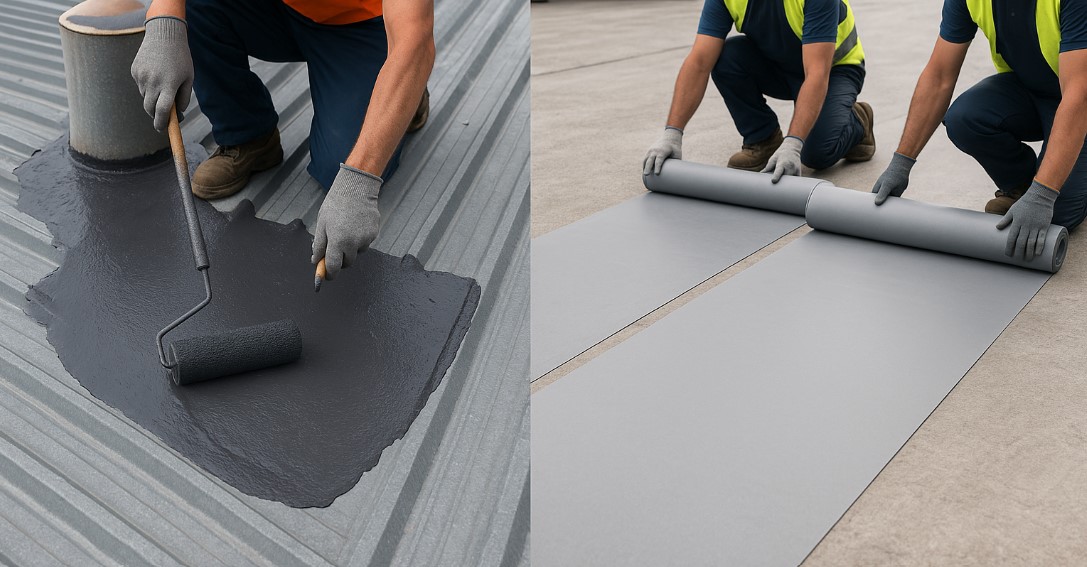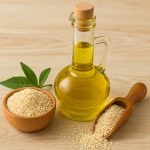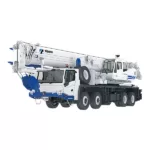Recently, there has been a remarkable advancement in waterproofing membrane technology within the construction sector. Each membrane type has its applications, ranging from a high-rise foundation to a commercial rooftop or a residential balcony. Protecting concrete structures with waterproofing membranes requires a meticulous selection process to guarantee durability and structural integrity. As we march brandished into 2025, contractors seem more divided than ever with two top solutions: liquid-applied membranes or sheet membranes. Who, out of these two contenders clinches the title in popularity? Let’s examine further.
What Does Waterproofing Membrane Mean?
A waterproofing membrane is a type of layered material, usually thin, that is utilized to seal a surface against water penetration. Dampness control on a building’s roof, basement, bathrooms, and balconies frequently require waterproof materials. To this effect, two types of membranes exist: liquid membranes and sheet membranes.
The decision often differs based on project location, size, budget, weather, and other scope, while each option comes with individual characteristics.
Liquid Waterproofing Membranes: Flexibility and Seamlessness
Liquid waterproofing involves applying a fluid membrane that cures to form a rubbery, highly flexible surface. Contractors love liquid membranes for projects that have many corners, complex shapes, or irregular surfaces.
Pros of Liquid Membranes:
- Seamless application reduces the risk of weak points.
- Ideal for roofs with lots of penetrations (vents, pipes, etc.).
- Easy to apply even on vertical surfaces.
Popular applications include flat roofs, balconies, parking decks, and irregular metal roofing structures. In fact, many metal roofing specialist contractors recommend liquid membranes for retrofitting older roofing systems where a tight, waterproof seal is essential.
Sheet Waterproofing Membranes: Strength and Predictability
Sheet membranes are pre-formed sheets made from materials like bitumen, PVC, or TPO, rolled out and adhered to surfaces. They offer high tensile strength and are excellent for large, flat, open areas.
Pros of Sheet Membranes:
- Factory-controlled thickness ensures consistency.
- Superior resistance to mechanical damage.
- Effective for areas with consistent, even surfaces.
Because they come in rolls, sheet membranes are often favored for commercial flat roofs, underground waterproofing, and large-scale residential projects like awning roof installations, where a clean, consistent layer is needed.
What Are Contractors Choosing in 2025?
Today’s contractors are becoming more project-specific. For complex architectural designs or quick refurbishments, liquid membranes are becoming the top choice. For traditional, large-scale waterproofing, sheet membranes continue to dominate.
Interestingly, hybrid systems that combine both technologies are also gaining traction. Contractors may apply sheet membranes on flat surfaces and liquid membranes around details and penetrations to maximize performance.
Conclusion: It’s About the Right Fit
At the end of the day, no one solution fits every project. Choosing the right waterproof membrane for roof depends on careful consideration of site conditions, structure design, and maintenance needs.
If you are looking for expert advice on protecting your roofing system or upgrading your building’s waterproofing, don’t hesitate to consult a metal roofing specialist or a trusted provider of awning roof solutions. They can guide you in selecting the best membrane system tailored to your project.
Ready to protect your property the right way?
Contact trusted waterproofing and roofing experts today to learn more about the best waterproofing membrane options for your needs!







